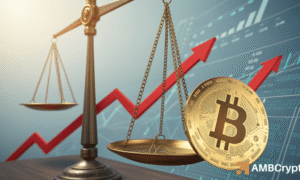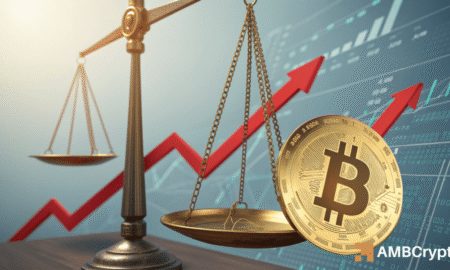Bitcoin’s Volatility Amid Trump’s Tariff Threats: An Analysis
In recent days, Bitcoin’s value has been significantly impacted by President Donald Trump’s unexpected tariff announcements, which have instigated a wave of global uncertainty and market volatility. Falling below $108,000 on July 7th, Bitcoin’s sharp decline has surprised many investors and raised questions about its role as a hedge against traditional market fluctuations. As countries grapple with rising trade tensions, Bitcoin appears to be declining alongside other risk assets, illustrating its vulnerability to geopolitical developments.
The Impact of Tariff Threats
President Trump recently announced new tariffs that have shaken the foundations of global trade relationships. The imposition of steep tariffs—25% on imports from Japan and South Korea and extending to 40% on goods from Malaysia, Kazakhstan, and South Africa—has heightened fears of a trade war. This unpredictability has stressed investors and sparked a "risk-off" sentiment, pushing them toward more traditional safe-haven assets. Bitcoin, which is often framed as "digital gold," has struggled to maintain this narrative, reacting more like a high-risk asset rather than a safe alternative.
Bitcoin’s Reaction to Market Conditions
On the day of Trump’s announcement, Bitcoin mirrored the drop in the S&P 500, which underscored the interconnectedness of various asset classes during periods of uncertainty. Investors noticed that Bitcoin’s price trajectory was harmonizing eerily with traditional markets, prompting concerns about its reliability as a hedge. Japanese automakers were among the first to feel the shockwaves, with shares of Toyota and Honda plummeting. The U.S. dollar, conversely, surged against currencies like the yen and won, highlighting a flight to safety in uncertain times.
Tariff Deadline Delayed, Market Confidence Shaken
Adding to the confusion, the White House recently pushed the tariff deadline back to August 1st. This move, billed as an opportunity for trade partners to negotiate better agreements, instead deepened investors’ uncertainties. The announcement by Press Secretary Karoline Leavitt that Trump is focused on the “quality of trade deals” rather than merely the “quantity” has done little to reassure market participants. Analysts are warning that Bitcoin’s recent behavior suggests it is increasingly acting as an indicator of overall market risk rather than a reliable hedge.
The Role of BRICS and Global Economic Dynamics
The trade tensions are further complicated by new threats aimed at BRICS nations, which include emerging economies like Brazil, Russia, India, China, and South Africa. Trump’s sudden shift in policy seems to target these nations strategically, adding layers of complexity to an already volatile trading environment. Treasury Secretary Scott Bessent’s attempts to calm markets by saying the focus is on quality over quantity have been met with skepticism. As the global macroeconomic environment continues to shift, ambiguity remains, leaving investors scrambling for clarity.
Investor Reactions and Future Outlook
As the situation develops, Bitcoin’s price has fluctuated slightly, regaining some ground to trade at approximately $108,899. However, the uncertainty surrounding tariffs has left many investors on edge. With Bitcoin increasingly viewed as a barometer for global market sentiment, traders are watching closely for further developments. Are we on the cusp of a new altseason, with altcoins following Bitcoin’s lead? The answer might depend heavily on how global markets react to further tariff discussions and their broader implications for the economy.
Conclusion: Preparedness in Uncertain Times
In conclusion, Bitcoin’s recent price volatility amidst Trump’s tariff threats signals a critical juncture for digital currencies in relation to global economic factors. As investors navigate this intricate landscape, understanding Bitcoin’s behavior as both a risk asset and a potential hedge becomes increasingly vital. With geopolitical tensions simmering, combined with economic uncertainties, market participants must stay informed and prepared for rapid changes. As we move forward, the focus will likely remain on Bitcoin and its interaction with traditional markets as we approach the new tariff deadline in August, signaling ongoing changes in investor sentiment and potential opportunities within the crypto space.















![Cronos [CRO] Declines 12% Following $20M Outflow – A Rebound Possible If…](https://icoinmarket.com/wp-content/uploads/2025/08/Abdul-9-1-1000x600.webp-450x270.webp)
